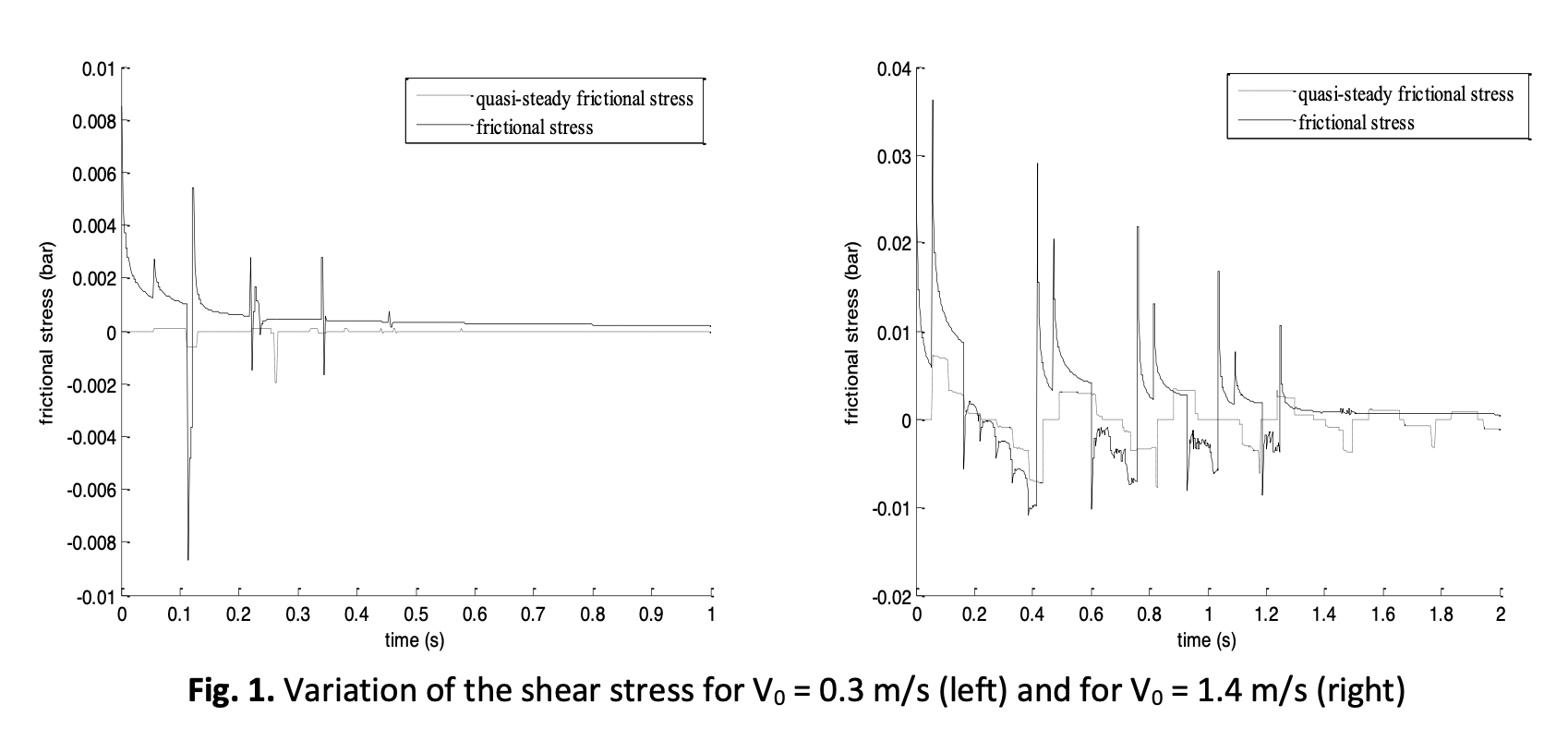Numerical Modelling of Cavitation in an Elastic Pipe
DOI:
https://doi.org/10.37934/arfmts.97.1.1319Keywords:
Cavitation model, column separation model of vapor, method of characteristics, transient flow, unsteady friction model, vapor pressureAbstract
This study is devoted to a theoretical and numerical modeling of transient vaporous cavitation in a horizontal pipeline. The model approach is, essentially, based on that of the column separation model (CSM). The basic system of partial differential equations to solve is a hyperbolic type and adapts perfectly to the method of characteristics. This code, allows us, taking into account the unsteady part of the friction term, to determine at any point of the pipe, and at each instant, the average piezometric head, the average discharge and the change in volume of the vapor cavity. This study illustrates the coupled effect of the presence of air pockets resulting in cavitation and the unsteady term of friction, on the amplitude of the pressure wave. The calculation results are in good agreement with those reported in the literature.
Downloads

































